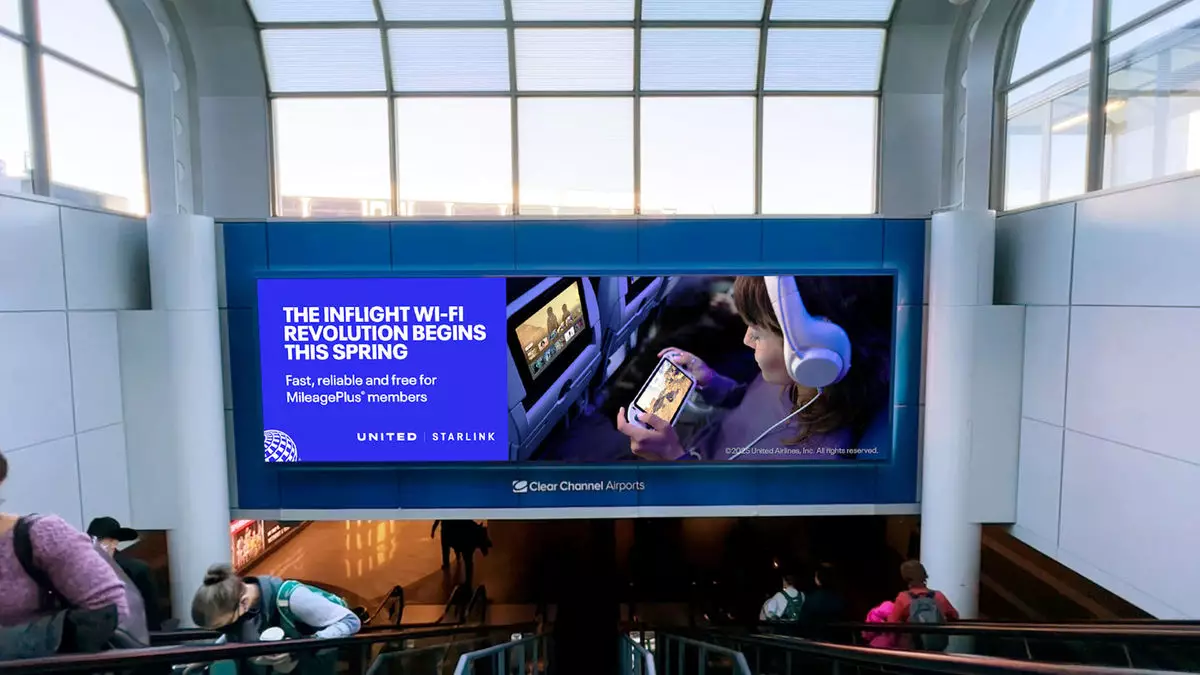United Airlines has taken a significant step toward enhancing air travel by announcing the introduction of its Starlink-enabled inflight WiFi service. This initiative, slated to roll out in spring 2024, is poised to revolutionize the in-flight experience by delivering high-speed internet access at altitudes that have traditionally been devoid of seamless connectivity. By providing this service for free to MileagePlus members, United is not only aiming to improve customer satisfaction but also to gain a competitive edge in the rapidly evolving aviation market.
The initial phase of United’s WiFi rollout will focus on Embraer E-175 regional aircraft. This specific choice reflects the airline’s strategy to optimize connectivity in its regional fleet before expanding to larger aircraft. With the installation process expected to be completed by the end of the year, United is demonstrating its commitment to modernizing its fleet and enhancing operational capabilities. Notably, the airline has chosen to exclude one-cabin 50-seat planes from this initial upgrade, which raises questions about the future of connectivity on smaller regional flights.
One of the key selling points of United’s Starlink-powered WiFi is the promise of high-speed connections. By partnering with SpaceX’s innovative satellite service, United aims to replicate the quality of internet access that passengers enjoy on the ground. This leap forward in technology is particularly vital in a world where connectivity has become a critical aspect of travel, especially for business travelers and remote workers who rely on stable internet access for productivity, even while flying.
United’s announcement comes at a time when free in-flight WiFi is increasingly becoming a norm rather than a luxury. JetBlue has carved out a niche as one of the first airlines to offer complimentary WiFi to all passengers, setting a high bar for its competitors. In light of this, United’s decision to limit free access to MileagePlus members might raise eyebrows among occasional travelers who would prefer to enjoy similar perks without the need for membership. United must therefore balance this exclusivity with broader access options to avoid alienating potential customers.
Looking ahead, United Airlines has ambitious plans to extend Starlink WiFi to its entire fleet, though the logistics of a full deployment pose challenges. Ensuring stable service across various flight paths and altitude ranges will be crucial for maintaining customer satisfaction. Furthermore, as the airline industry continues to face pressures from rising operational costs and fluctuating demand, United must navigate these challenges while keeping its focus on technological advancements.
United Airlines’ introduction of the Starlink-powered inflight WiFi service represents a significant shift in the airline’s approach to connectivity. By prioritizing high-speed internet access for its MileagePlus members, United is not only enhancing its customer experience but also setting the stage for a more competitive landscape in air travel. The success of this initiative will depend on the airline’s ability to implement the service effectively across its fleet, demonstrating that in the ever-evolving aviation industry, connectivity is king.


Leave a Reply